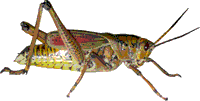Entomology Collections, General

Entomology Papers from Other Sources
Document Type
Article
Date of this Version
2008
Abstract
We studied the biology of Dendroctonus murrayanae Hopkins (Coleoptera: Curculionidae: Scolytinae) in lodgepole pine, Pinus contorta Douglas, in Idaho and Montana. The beetle was not a primary agent of tree mortality. Susceptible host trees were physically damaged, had thin foliage, or were otherwise predisposed to infestation. Beetles attacked individual trees, not in groups, near ground level and at low density. Life stages and their behavior are described. Egg galleries were constructed upward and usually had short spurs. Mating occurred in the egg gallery. Eggs were laid in an elongated group, not in niches, in a shallow excavation along only one side of the egg gallery. Larvae aggregated in a communal chamber, feeding side by side, but separated before pupation. D. murrayanae has four instars. One annual generation is indicated, overwintering as larvae. D. murrayanae occurred in some trees with Pseudips (=Ips) mexicanus (Hopkins), Ips pini (Say), and Hylurgops porosus (LeConte) but seldom with the mountain pine beetle, Dendroctonus ponderosae Hopkins. No natural enemy or commensal insect was observed in brood chambers. A new character on the frons is described and the relationship of D. murrayanae and the spruce beetle, Dendroctonus rufipennis (Kirby), is discussed.


Comments
Published in Ann. Entomol. Soc. Am. 101(6): 1010-1016 (2008).